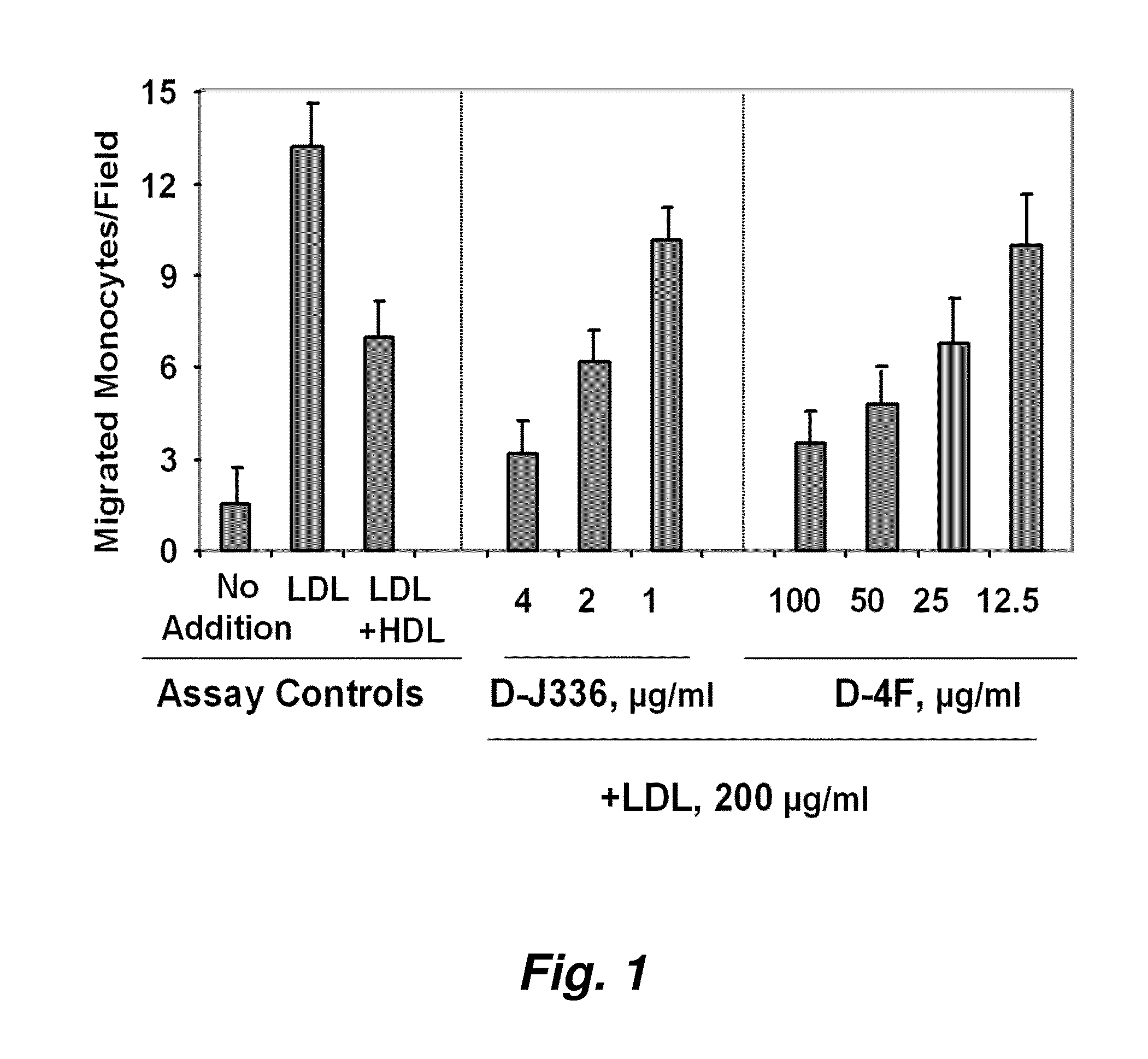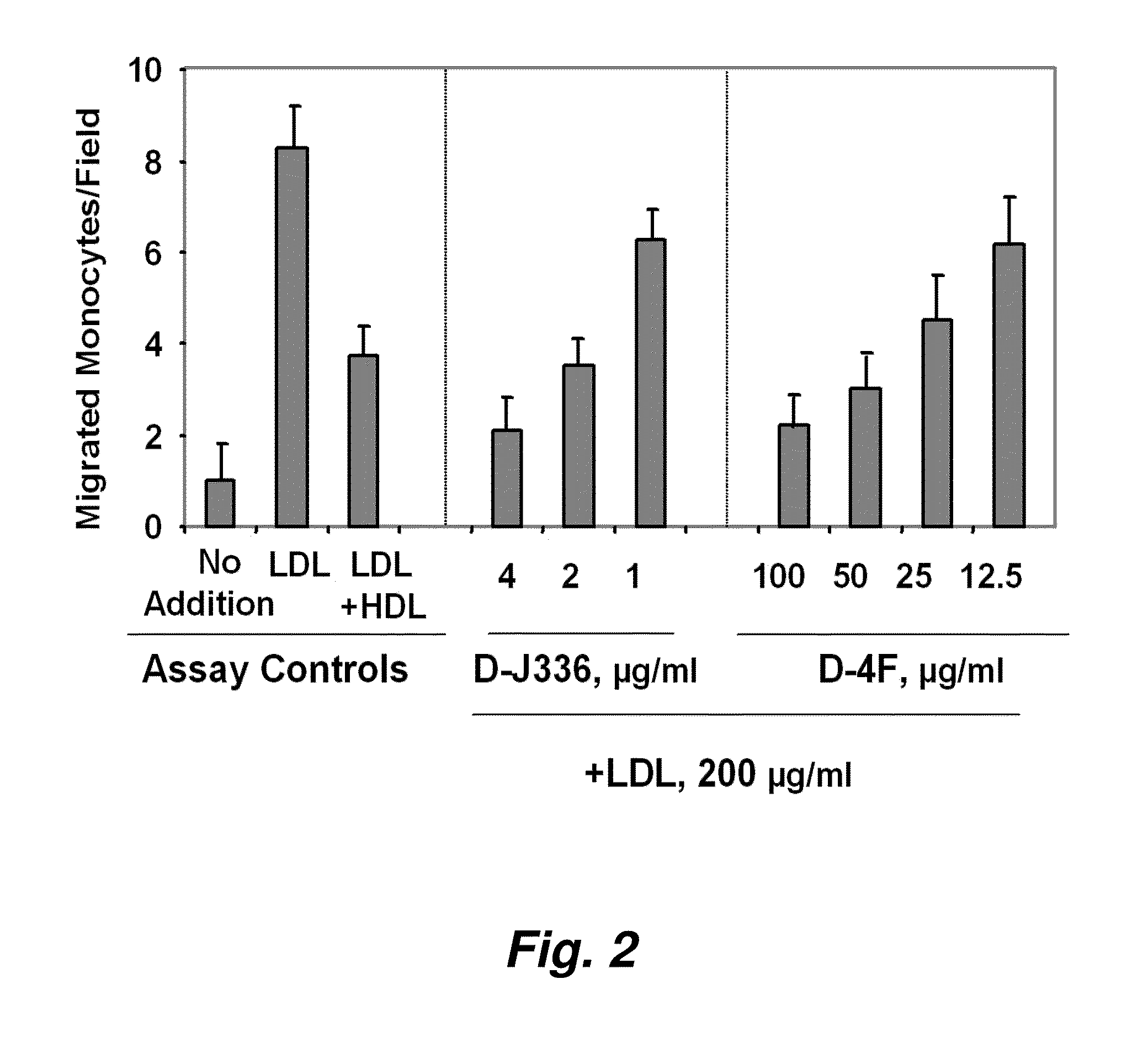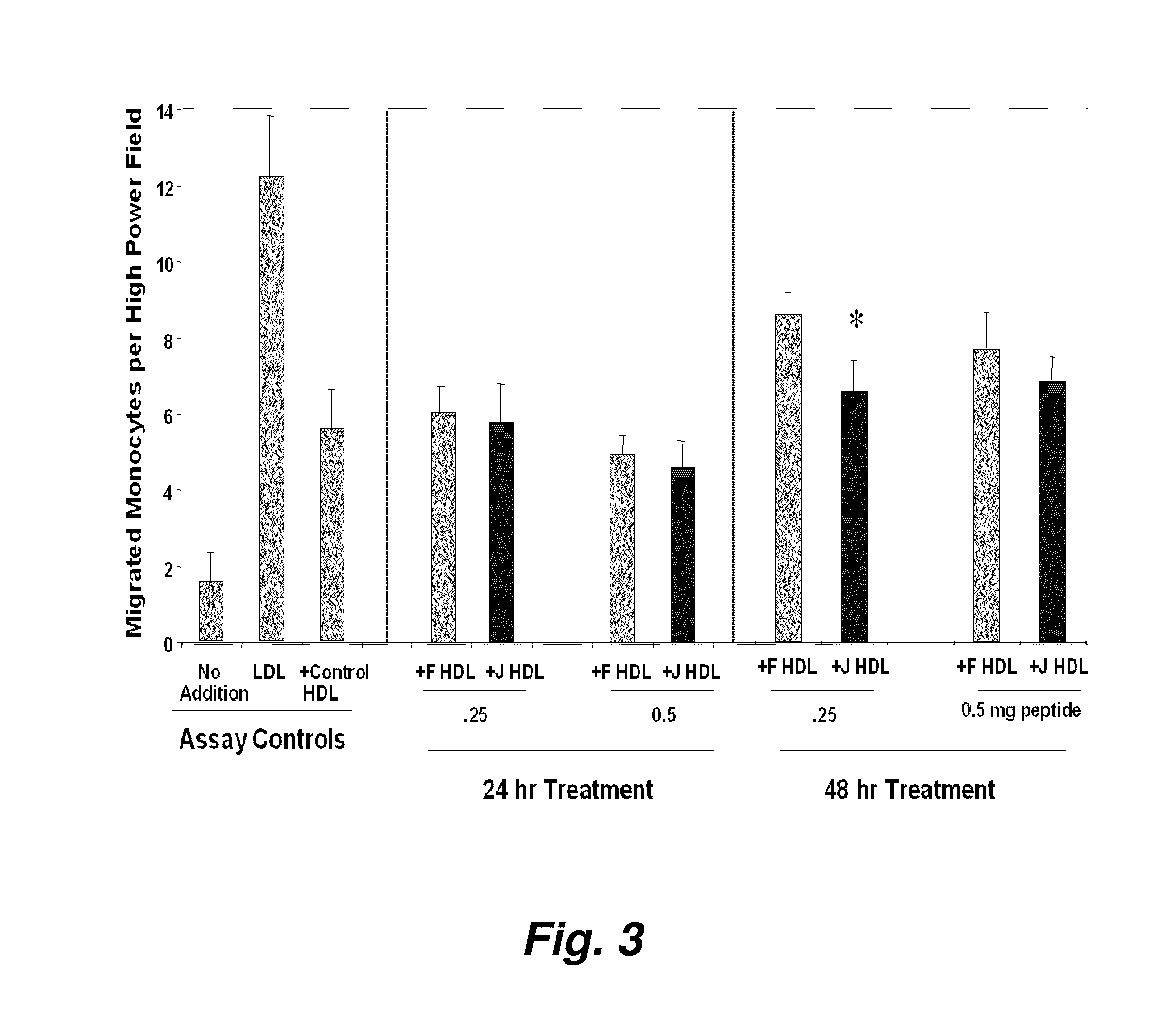Peptides and peptide mimetics to inhibit the onset and/or progression of fibrotic and/or pre-fibrotic pathologies
a technology of fibrotic and pre-fibrotic pathologies, applied in the field of atherosclerosis and other conditions, can solve problems such as death and disability, and achieve the effect of inhibiting the onset and/or progression of liver disease and inhibiting the progression of liver diseas
- Summary
- Abstract
- Description
- Claims
- Application Information
AI Technical Summary
Benefits of technology
Problems solved by technology
Method used
Image
Examples
example 1
Use of ApoJ-Related Peptides to Mediate Symptoms of Atherosclerosis
Prevention of LDL-Induced Monocyte Chemotactic Activity
[0300]FIG. 1 illustrates a comparison of the effect of D-4F (Anantharamaiah et al. (2002) Circulation, 105: 290-292) with the effect of an apoJ peptide made from D amino acids (D-J336, Ac-L-L-E-Q-L-N-E-Q-F-N-W-V-S-R-L-A-N-L-T-Q-G-E-NH2, SEQ ID NO:999)) on the prevention of LDL-induced monocyte chemotactic activity in vitro in a co-incubation. Human aortic endothelial cells were incubated with medium alone (no addition), with control human LDL (200 μg protein / ml) or control human LDL+control human HDL (350 μg HDL protein / ml). D-J336 or D-4F was added to other wells in a concentration range as indicated plus control human LDL (200 μg protein / ml). Following overnight incubation, the supernatants were assayed for monocyte chemotactic activity. As shown in FIG. 1, the in vitro concentration of the apoJ variant peptide that prevents LDL-induced monocyte chemotactic act...
example 2
Oral G* Peptides Increase HDL Protective Capacity in Apo E Deficient Mice
[0313]Female, 4 month old apoE deficient mice (n=4 per group) were treated with G* peptides having the following amino acid sequences. Peptide 113-122=Ac-L V G R Q L E E F L-NH2 (SEQ ID NO:1000), Peptide 336-357=Ac-L L E Q L N E Q F N W V S R L A N L T Q G E-NH2 (SEQ ID NO:1001) and Peptide 377-390=Ac-P S G V T E V V V K L F D S-NHz (SEQ ID NO:1002).
[0314]Each mouse received 200 μg of the peptide by stomach tube. Four hours later blood was obtained, plasma separated, lipoproteins fractionated and HDL (at 25 μg per ml) was assayed for protective capacity against the oxidation of LDL (at 100 μg per ml) in cultures of human artery wall cells. The data are shown in FIG. 8. The peptide afforded significant HDL-protective capacity in the mice.
[0315]In another experiment, female, 4 month old apoE deficient mice (n=4 per group) were treated with the 11 amino acid G* peptide 146-156 with the sequence: Ac-Q Q T H M L D V...
example 3
Comparison of D-4F and Reverse (Retro-) D-4F Activity
[0316]As shown in FIG. 16, the biological activities of D-4F and reverse RD-4F are not significantly different. Female apoE null mice were administered by stomach tube 0, 3, 6, 12, or 25 micrograms of D-4F or Reverse D-4F in 100 microliters of water. Blood was obtained 7 hours later and the plasma was fractionated by FPLC. A standard control human LDL was added to human artery wall cells at a concentration of 100 micrograms of LDL-cholesterol / mL (LDL). The resulting monocyte chemotactic activity was normalized to 1.0. The same LDL at the same concentration was added to the human artery wall cells together with HDL at 50 micrograms HDL-cholesterol / mL from a normal human (hHDL) or from the apoE null mice that received the dose of D-4F or Reverse D-4F shown on the X-axis. The resulting monocyte chemotactic activity was normalized to that of the LDL added without HDL. The resulting value is the HDL Inflammatory Index. The results show...
PUM
| Property | Measurement | Unit |
|---|---|---|
| width | aaaaa | aaaaa |
| concentrations | aaaaa | aaaaa |
| density | aaaaa | aaaaa |
Abstract
Description
Claims
Application Information
 Login to View More
Login to View More - R&D
- Intellectual Property
- Life Sciences
- Materials
- Tech Scout
- Unparalleled Data Quality
- Higher Quality Content
- 60% Fewer Hallucinations
Browse by: Latest US Patents, China's latest patents, Technical Efficacy Thesaurus, Application Domain, Technology Topic, Popular Technical Reports.
© 2025 PatSnap. All rights reserved.Legal|Privacy policy|Modern Slavery Act Transparency Statement|Sitemap|About US| Contact US: help@patsnap.com



